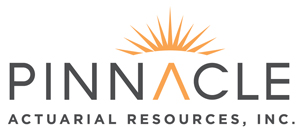Issues & Answers Special Advertising Section:
April 2021

Gaétan Veilleux
Senior Consulting Actuary
Pinnacle Actuarial Resources

Radost R. Wenman
Consulting Actuary
Pinnacle Actuarial Resources

The industry’s widespread adoption of GLMs is the greatest testament to their usefulness for modeling risk and setting prices. Over the course of the last few decades, the models have become indispensable for actuaries and data scientists, who have come to rely on GLMs for prediction over, say, standard linear regression models. GLMs may utilize linear regression, but the link function along with the exponential family of distributions allow the model to fit a series of predictor variables to more flexibly quantify risk. This is critical considering the type of variables that insurers need to incorporate in pricing and the metrics needed to evaluate, including frequency, severity and pure premium. As with other statistical methods and approaches—or any other business improvement or innovation—it is their proven value, through efficiency and effectiveness, that has made the use of GLMs practically universal within the insurance industry.
Do you see GLMs as the future of setting rate?Similarly to the relationship of GLMs to linear regression models, we shouldn’t assume that GLMs will remain industry standard forever. We will likely see new tools that will enhance, augment or perhaps replace GLMs as a preferred model. Certainly, artificial intelligence and machine learning may have some bearing on which tools and models actuaries and insurers use. More immediately, however, there are insurance industry applications in which GAMs, or generalized additive models, have demonstrated an advantage over GLMs.
Is there an argument to be made for using a GAM as opposed to a GLM?
As with the advantage of GLMs over standard linear regression, the main advantage of GAMs over GLMs is an even higher degree of flexibility. GAMs are considered an extension of GLMs, partially because both are based on the aforementioned link function and the exponential family of distributions. But because GAMs can incorporate a wider range of inputs and functions, including nonlinear trends, unlike GLMs, they can model general, curvilinear shapes more effectively. That gives GAMs an edge in certain applications, and types of insurance that include a wider range of data.
Where are GAMs most effective?
Since GAMs can incorporate more flexible variable effects into an analysis than a typical GLM, GAMs can be a highly useful option in our age of big data. The diversity and depth of data currently being aggregated is greater than ever before. A great example is vehicle telematics, characterized with much greater volume and nuance of driving data than what was accessible a decade ago.